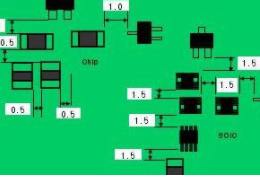Introduction to PCB circuit board and production process
1. PCB
PCB is Printed Circuit Board, also known as printed circuit board , English is called PCB, and it is also called PWB (Printed Wires Board). The so-called printed circuit board refers to: on an insulating substrate, selectively Process mounting holes, connecting wires, and disassembling and soldering pads of electronic components to realize the assembly and disassembly of PCB circuit boards for electrical connection between components.
Second, the substrate
Nowadays, printed circuit boards have become the most important secondary component PCB circuit board consumption for most electronic products. Single and double-sided printed boards are manufactured on the substrate material -laminate (Copper-(2lad I. aminates, CCI.), selectively stopping hole processing, electroless copper plating, copper electroplating, Etching and other processing to obtain the desired circuit pattern. The manufacture of another type of multilayer printed board is also based on the inner core thin copper clad laminate, and the conductive pattern layer and the prepreg (Pregpr'eg) are replaced by one pass. The sexual lamination is bonded together to form an interconnection of more than 3 layers of conductive patterns.
Therefore, it can be seen that as the substrate material in printed board manufacturing, whether it is copper clad laminate or prepreg, it plays a very important role in the production of PCB circuit boards in printed boards. It has the functions of conducting, insulating and supporting three aspects. The performance, quantity, processability in manufacturing, manufacturing cost, manufacturing degree of the printed board, to a large extent, depend on the substrate material
Three, classification

General substrate materials for printed boards can be divided into two categories: rigid substrate materials and flexible substrate materials PCB circuit board consumption. Generally, an important variety of rigid substrate materials is copper clad laminate. It is made of reinforced material (Reinforeing Material), impregnated with resin adhesive, dried, cut, laminated into a blank, and then covered with copper foil, with steel plate as a mold, and processed by high temperature and high pressure in a hot press. Caused. The prepregs used for general multilayer boards are semi-waste products in the manufacturing process of copper clad laminates (mostly glass cloth is impregnated with resin and processed by drying).
There are many ways to classify copper clad laminates //////PCB circuit board consumption. Generally, according to the difference of the reinforcing materials of the board, it can be divided into five categories: paper base, glass fiber cloth base, composite base (CEM series), multi-layer laminate base and special material base (ceramic, metal core base, etc.). If you stop the classification according to the difference of the resin adhesive accepted by the board, the common paper-based CCI. There are: phenolic resin (XPc, XxxPC, FR-1, FR-2, etc.), epoxy resin (FE-3), polyester resin and other types. Common glass fiber cloth base CCL has epoxy resin (FR-4, FR-5), which is currently the most commonly used glass fiber cloth base type. In addition, there are other special resins (glass fiber cloth, polyamide fiber, non-woven fabric, etc.): bismaleimide modified triazine resin (BT), polyimide resin (PI ), diphenylene ether resin (PPO), maleic anhydride imine-styrene resin (MS), polycyanate resin, polyolefin resin, etc.
According to the classification of the flame retardant performance of CCL, it can be divided into flame-retardant (UL94-VO, UL94-V1) and non-flame-retardant (UL94-HB) two types of PCB circuit board consumption. In the past year or two, with increasing attention to environmental issues, a new type of non-bromine-free CCL has been divided into flame-retardant CCL, which can be called "green flame-retardant cCL". With the rapid development of electronic product technology, there are higher performance requirements for cCL. Therefore, from the performance classification of CCL, it is divided into general performance CCL, low dielectric constant CCL, high heat resistance CCL (normal board L is above 150 degree Celsius), low thermal expansion coefficient CCL (usually used for packaging and unpacking substrates). On) and other types.
Commonly used today are:
Most of our products use FR-4 boards, the flame retardant grade is 94V-0, and the copper thickness is generally required to be 1OZPCB circuit board consumption. OZ is commonly used as a copper thickness unit in PCB production. 1OZ means that the weight of copper foil on 1 square foot area is 1 ounce, and the corresponding physical thickness is 35um. 2OZ corresponds to the copper thickness of 70um.
Fourth, the general consumption process
Sending materials - inner layer drilling - inner layer line - inner layer etching - inner layer maintenance - inner layer test - blackening - pressing - outer layer drilling - black hole - primary copper - dry film line - secondary copper - go Membrane etching - intermediate inspection - semi-waste product test - solder mask printing - tin spraying, immersion gold - text - molding - test - general inspection - unpacking - shipment